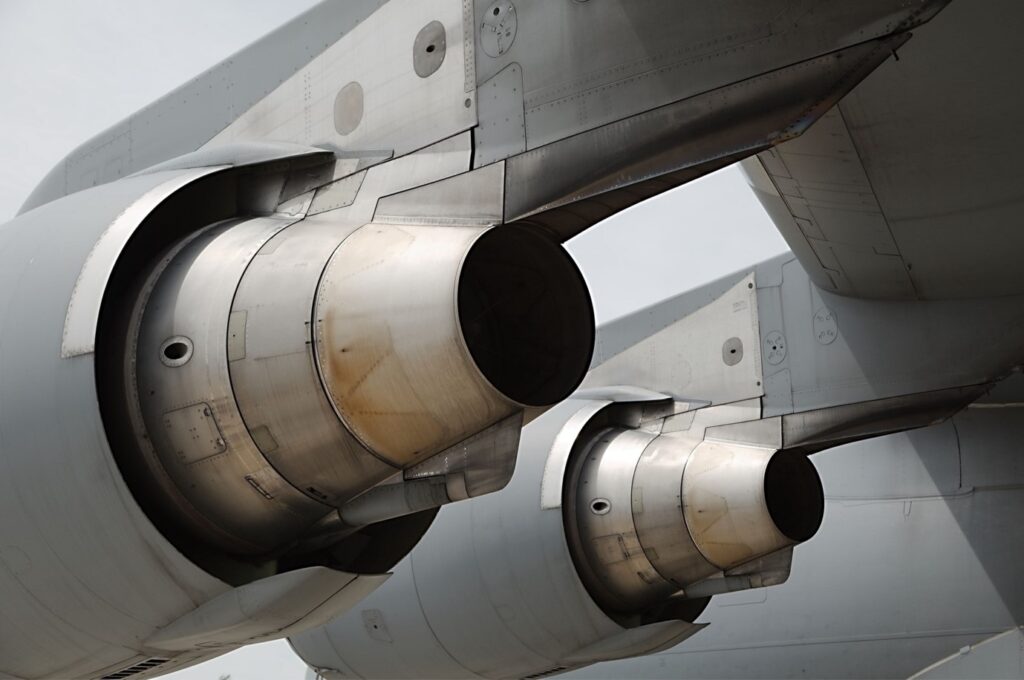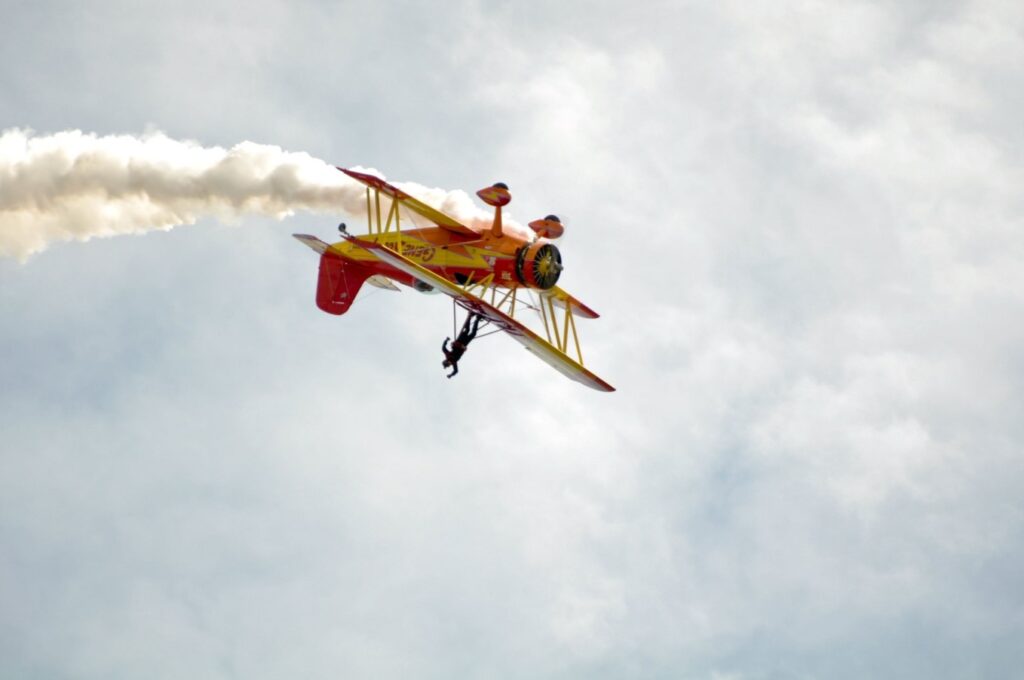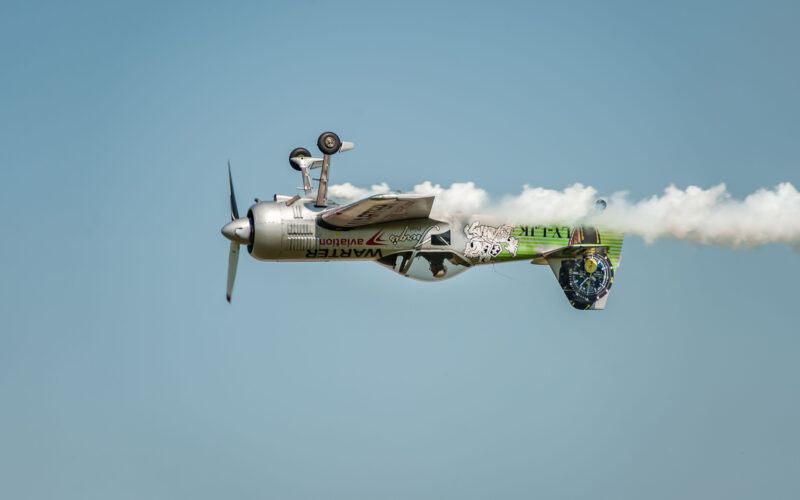In general and commercial aviation, there is no practical need to routinely fly any plane upside down. Conventional aircraft are designed to operate with optimal efficiently in upright flight. However, there are specific circumstances where inverted flight becomes relevant and useful. It can be particularly useful in fighter jets and aerobatic displays.
Aerodynamics is a fascinating field that governs the behavior of objects in the air, including airplanes. The principles of aerodynamics are crucial for designing safe and efficient aircraft. One common question that often arises is whether planes can fly upside down. The image of an inverted aircraft defies our understanding of traditional flight, but the answer to this question lies deep within the complexities of aerodynamics.
Therefore, in this article, we’ll delve into the key concepts of aerodynamics and examine the feasibility and limitations of inverted flights for different types of airplanes.
Fundamentals of aerodynamics
Aerodynamics is the study of how air interacts with solid bodies, such as airplanes, and the forces that result from this interaction. The most fundamental forces at play during flight are lift, weight, thrust and drag. Lift is the upward force that opposes gravity and keeps the aircraft airborne. Thrust, provided by the engines, propels the aircraft forward, while drag is the resistance to motion caused by air friction. Working together, these forces enable stable flight.
Generating lift
Lift is primarily generated by the shape of an aircraft’s wings. Airfoils, the cross-sectional profiles of wings, are carefully designed to create low pressure above the wing and high pressure below it when the plane is in motion. This pressure difference creates an upward force, lifting the aircraft against the force of gravity. When the plane is flying right side up, the wing’s shape and orientation work optimally to generate lift.
Inverted flight – the challenge
Inverted flight, or flying upside down, poses a significant challenge for airplanes due to the change in the wing’s orientation and the direction of lift. In this situation, the wing’s shape, which usually generates lift efficiently, becomes detrimental to maintaining flight. As the wing’s top surface faces downwards, it creates higher pressure above and lower pressure below, causing a net downward force instead of the desired upward lift. Consequently, the plane tends to lose altitude rapidly.
Overcoming the challenge
While it is difficult for conventional airplanes to maintain inverted flight for extended periods, certain aircraft, like aerobatic planes and fighter jets, are designed to perform aerobatic maneuvers, including inverted flight. These aircraft have symmetrical airfoils that allow them to generate lift effectively regardless of their orientation. Moreover, they are equipped with powerful engines and advanced control systems to provide the necessary thrust and stability during aerobatic maneuvers.
The role of thrust and control
Inverted flight requires more than just a symmetrical wing design. Adequate thrust from the engines is essential for maintaining the necessary airspeed, especially when fighting gravity’s pull. Additionally, precise control of the aircraft’s pitch, roll and yaw is vital to keep it stable during inverted flight. Therefore, pilots of aerobatic aircraft undergo extensive training to master these maneuvers safely.

Limitations of inverted flight
Despite the capabilities of aerobatic planes, the inverted flight has its limitations. The engine’s fuel supply may be affected during prolonged inverted flight, as the fuel system may not be designed to handle operation upside down. Additionally, the human body is not well-suited for sustained inverted flight due to blood circulation issues, so pilots wear specialized G-suits to mitigate these effects.
How do fighter jets fly upside down?
Fighter jets are designed for high maneuverability and are capable of flying upside down. The key to their ability to perform aerobatic maneuvers, such as inverted flight, as mentioned earlier, lies in their advanced aerodynamic design and powerful engines. Additionally, they possess powerful afterburning engines that provide ample thrust, enabling them to maintain the necessary airspeed in inverted flight.
During aerobatic maneuvers, highly skilled fighter jet pilots carefully manage the aircraft’s controls to maintain stability and control. However, inverted flight in fighter jets is not typically sustained for extended periods, as it is primarily used for specific aerobatic displays or tactical situations where rapid changes in orientation are necessary.
By donning anti-G suits, fighter pilots can endure more significant head-to-toe G forces, reaching up to 8 or 9 Gs, and sustain these forces for extended periods. These specialized suits employ air bladders to compress the legs and abdomen during high Gs, effectively redirecting blood to the upper body.
Can large commercial planes fly upside down?
Large commercial planes, such as passenger airliners, are not designed to fly upside down, and attempting to do so would be extremely dangerous and potentially catastrophic. The aerodynamic design of commercial planes, including their wing shape and configuration, is optimized for efficient level flight and safe operation within the typical flight envelope.
Commercial airplanes are designed to generate lift efficiently when flying right side up, and their wings are not symmetrical like those of aerobatic aircraft or fighter jets. Therefore, if a large commercial plane were to attempt an inverted flight, it would experience a significant loss of lift, resulting in a rapid descent and potential loss of control.
Moreover, the systems and structures of commercial airplanes are not designed to withstand the aerodynamic forces experienced during inverted flight. Attempting to fly a large commercial plane upside down would place tremendous stress on the airframe, potentially leading to structural failure.
Commercial aircraft incidents and stalls
There have been real-life examples of incidents involving extreme maneuvers or aerodynamic stalls that have occurred with large commercial aircraft, such as:
- Boeing 707 flight test, in 1955: during flight testing of the Boeing 707, a test pilot inadvertently put the aircraft into a high-speed dive. The resulting G-forces caused structural damage to the wings, leading to the loss of the aircraft.
- China Airlines Flight 006, in 1985: this Boeing 747-SP experienced a loss of control during a steep climb after takeoff from Los Angeles International Airport. The aircraft rolled upside down and descended rapidly before the pilots regained control. The incident resulted in damage to the aircraft, but thankfully no fatalities.
- Air France Flight 447, in 2009: this Airbus A330 crashed into the Atlantic Ocean during a flight from Rio de Janeiro to Paris. The accident was caused by a combination of factors, including a high-altitude stall, inconsistent airspeed readings due to pitot tube icing, and pilot error. The plane’s crew struggled to recover from the stall, leading to the tragic loss of all 228 people on board.
Can stunt planes fly upside down?
Stunt planes, also known as aerobatic aircraft, are purpose-built for performing aerobatic maneuvers, including sustained inverted flight. These specialized aircraft have symmetrical airfoils and powerful engines that allow them to generate lift efficiently in both right-side-up and upside-down orientations.
Stunt pilots undergo rigorous training to master the intricacies of aerobatic maneuvers, including flying upside down. They carefully manage the aircraft’s control surfaces, throttle and other systems to maintain stability and precise control during inverted flight. These aircraft are typically lightweight and have reinforced airframes to withstand the stresses of high-G maneuvers.
Stunt planes can perform a wide range of aerobatic maneuvers, such as loops, rolls and inverted flight, and they thrill airshow audiences with their breathtaking displays of precision and skill.


